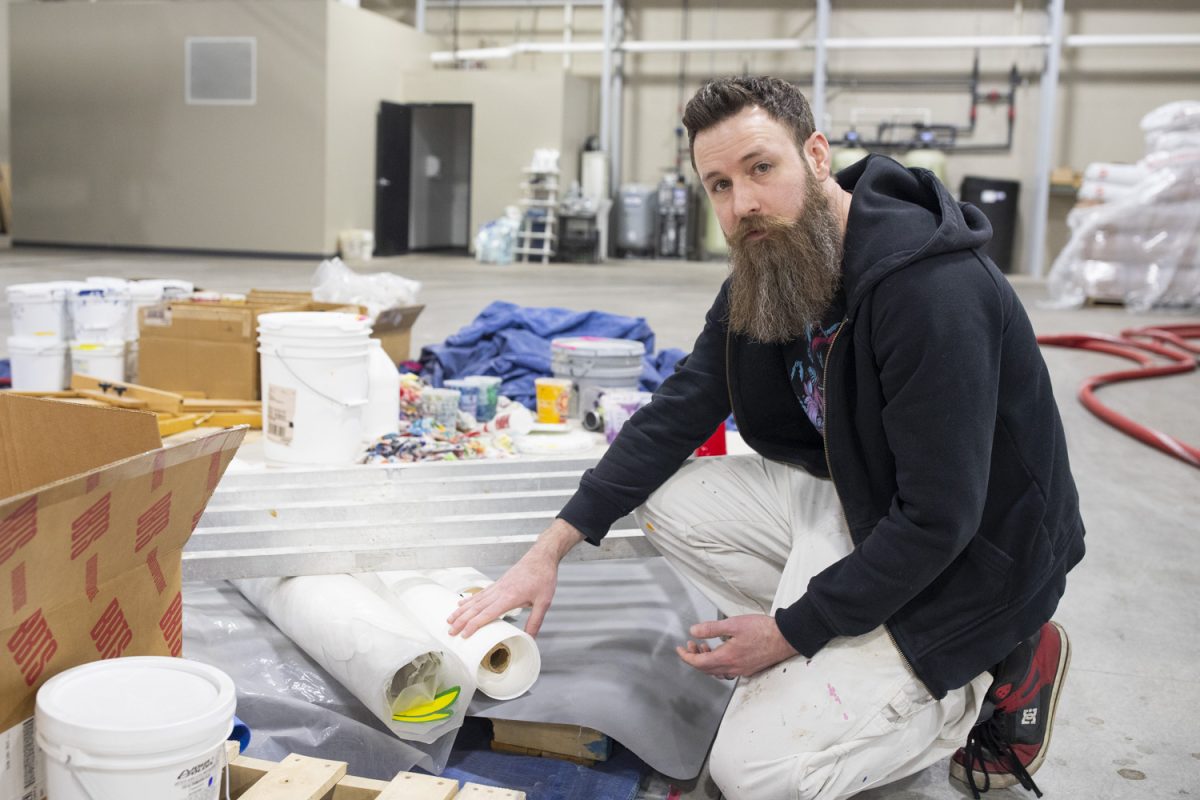At the Iowa City Public Art Advisory Committee’s recent meeting, members discussed the applications of artists who submitted proposals to its Public Art Matching Fund Program, or PAMFP, which provides grants to support local public art projects, foster creativity, and enhance access to the arts in Iowa City.
Iowa City boasts an inventory of over 30 public art pieces, which are valued at over $1 million, and spread across its downtown district and Johnson County.
These pieces are supported and maintained by the city of Iowa City and, as PAAC committee member and director of Iowa City’s parks and recreation department Juli Seydell Johnson explained, the city supports public art because it promotes community involvement.
“It helps make our neighborhoods vibrant. It helps bring people out to look at things and have discussions with our neighbors and kind of fosters that community engagement,” Seydell Johnson said. “It just helps identify Iowa City with some unique presentations.”
The grant received 10 applicants, with requests ranging from $682 to $4,000 to fund projects such as murals, video installations, podcast installations, concerts, and collaborative art projects.
The city also promotes community engagement with public art pieces through its interactive map, which documents public art pieces like sculptures, murals, the the Literary Walk, and neighborhood art pieces, encouraging people to explore Johnson County. As Seydell Johnson explained, the art grant encourages this map to grow by expanding the types of public art displays and adding their locations.
“It allows for partnerships with a lot of different organizations or emerging artists and also lets us put arts in different places of the city, so it’s not all concentrated downtown or in one particular neighborhood,” Seydell Johnson said. “I think it fosters new art, and it fosters different types of art that are sometimes a little more experimental.”
Jonathan Sims, who also goes by the name Skelenaut, is a local illustrator and artist who has been commissioned to produce multiple public art pieces across Iowa. These include wood plank paintings and a mural at ReUnion Brewery, a mural of a prehistoric Dunkleosteus in “Art Alley” outside of Elray’s, and a mural for Alter Ego Comics in Marion, Iowa.
Sims said public art is important to a city because it welcomes both residents and tourists and encourages people to be outside in the streets of a city rather than isolated within their homes. This creates a vibrant space that benefits inhabitants, businesses, tourism, and the city itself.
“I love how public art can give an identity to a neighborhood or a town and liven up the space,” Sims said. “It makes it really inviting to visit. I would definitely rather be looking at a mural or graffiti than a billboard or advertising. Especially being new to a place, I feel like you are more invited to explore and take your time and spend more time on those streets.”
RELATED: The Stanley Museum of Art’s new exhibit ‘it’s a fine thing’ explores underexposed community
Public art is generally more accessible to the public than art confined to museums and galleries, which patrons usually have to buy tickets or pay to see.
As Sims explained, by having art that’s unrestricted by the walls of a gallery or by barriers of cost, more people can view and learn to appreciate art.
“I love when cities take the time and resources to fill their town or their city with more art,” Sims said. “And I do think it’s important to put art in public places because not everybody out there appreciates art, and not everybody out there is going to seek it out on their own time by going to a museum or a gallery. I think bringing the art to the people is a really good solution to that problem.”
One piece of Iowa City public art that received attention recently was a mural painted by Keith Haring, a prominent street artist in New York City in the 1980s, for Ernest Horn Elementary School, which was on display at the Stanley Museum of Art as a part of the exhibit, “To My Friends at Horn: Keith Haring and Iowa City.”
The mural, which was painted in one day in collaboration with 100 high school students, depicts characters bursting from the pages of a book in Haring’s signature cartoon-ish style.
Diana Tuite, the senior curator of modern and contemporary arts at the Stanley Museum, organized the exhibit and became well-versed in Haring’s artwork and life as an artist.
“He would say, ‘I like the idea of things lasting longer than you last,’ so for him, this idea that really motivated him was that art can create a shared and accessible and inclusive experience,” Tuite said. “It was about making art something that commuters could encounter in the course of their daily life, so it’s not a function of privilege.”
Haring’s art, along with many other public art pieces, including those in Iowa City, democratize art and are important for returning art to the public, Tuite said.
“I think we live in a world where everything is increasingly privatized, and so this idea of reclaiming a public sphere is really important for [Haring] and for many artists who have worked in his wake,” Tuite said.



